When you think of Hibiscus flowers, what usually comes to mind are tropical landscapes… Lush bushes dotted with big, showy blooms in beautiful shades of red, pink, purple, or white, with hummingbirds and butterflies flocking to them in droves. It’s every gardener’s dream!
But what if you don’t live in a region that gets warm weather year-round? After all, you’re most likely thinking of a plant called Hibiscus rosa-sinensis, which is a tropical species that unfortunately doesn’t tolerate the cold.
Luckily, this doesn’t mean you have to go without. Although the genus Hibiscus mostly likes the heat, cold-hardy Hibiscus plants do exist! Also known as rose mallows, these often-overlooked perennials offer all the beauty and drama of their tropical cousins (and then some!) but are tough enough to overwinter outdoors in northern climates.
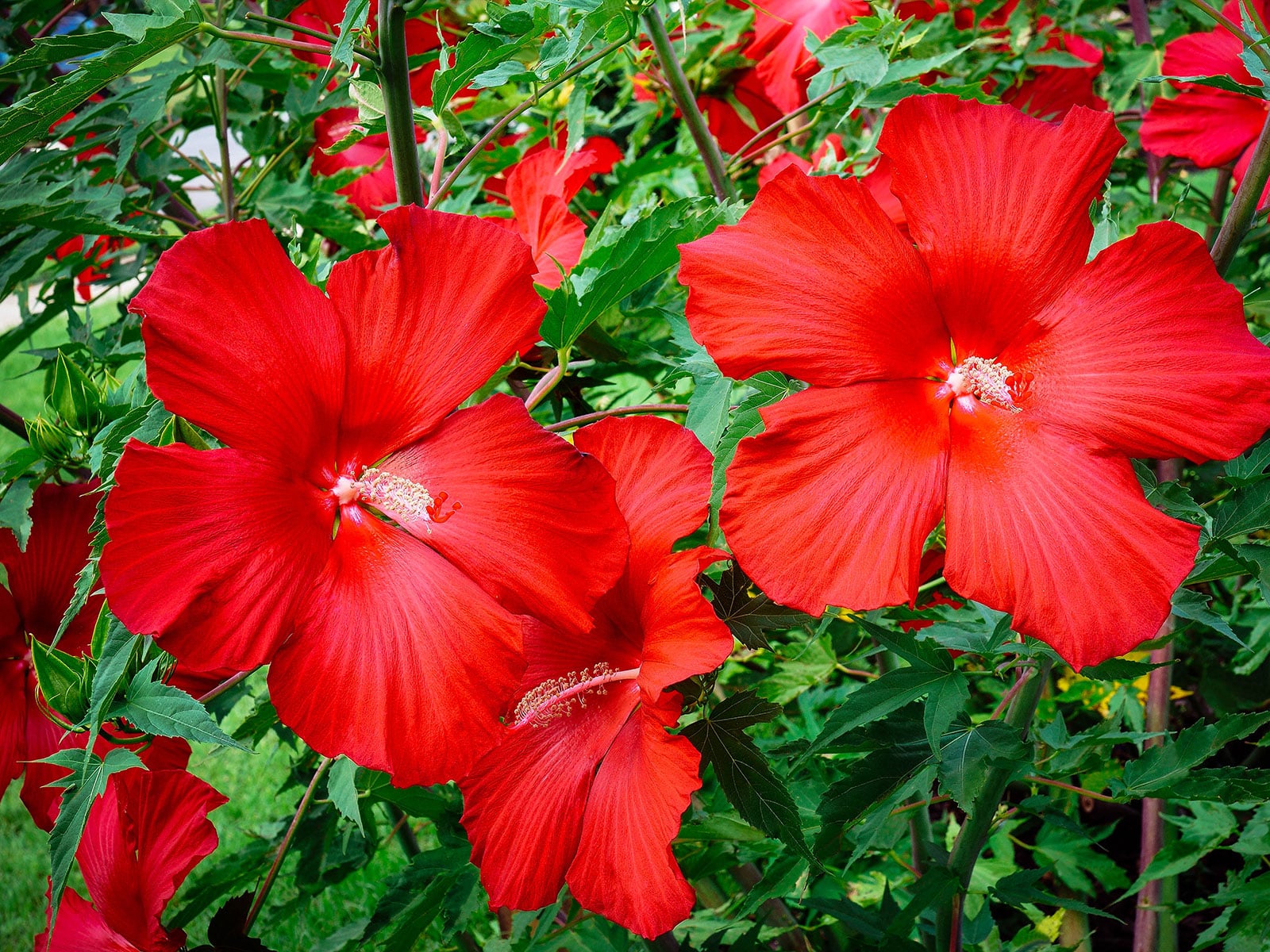
What is a hardy Hibiscus?
Most plants labeled as “hardy Hibiscus” are hybrids. They’re the result of crossing and selective breeding of different Hibiscus species by plant nurseries. This is done specifically to produce sturdy plants that don’t mind when things get a little chilly, but still produce amazing blooms that look like they came straight from a tropical island.
The species involved in these crossings are often native to North America, so unlike the tropical Hibiscus, they’re used to our climate. Nurseries mostly use:
- Hibiscus moscheutos, the swamp rose mallow, which is native to eastern North America
- Hibiscus coccineus, the scarlet rose mallow, which is native to the southeastern US
- Hibiscus laevis, the halberd-leaf rose mallow, which is native to central to eastern North America
Hardy Hibiscus plants are herbaceous sub-shrubs that grow to a maximum height of around 7 feet and can reach up to 4 feet in width. They’re usually among the last plants to produce leaves in spring, but they more than make up for that once they start flowering in mid to late summer.
Hardy Hibiscus flowers, which often stick around until well into fall, are easy to recognize by their huge size and fragile, paper-thin petals. The blooms have prominent, cream-colored reproductive parts (pistil and stamens) in the center and come in a wide range of colors. You can find them in white (often with a pink center), pink, purple, red, and even blue-ish.
Once the blooming season is over and temperatures begin to drop, your hardy Hibiscus will die off all the way to the ground. No worries: the roots are alive, and the plant will come right back in spring.

Hardy Hibiscus vs. tropical Hibiscus
If you’re looking for a winter-hardy Hibiscus to add to your garden, it’s important to choose the right plant. If you accidentally go for a tropical species and you’re in a colder climate, it’ll die back in winter and never come back! Hardy Hibiscus, on the other hand, will make a miraculous return once temperatures rise in spring.
If your plant didn’t come with a name tag, it can be a little challenging to figure out whether it’s tropical or hardy. Hardy Hibiscus varieties sold at your local garden center will usually be labeled as such, but you can also look out for the following characteristics:
- Hardy Hibiscus features larger blooms than its tropical cousins. I’m talking dinner plate-sized! (Up to 10 inches in diameter, compared to a maximum of 8 inches for tropicals.)
- Hardy Hibiscus flowers have a shorter stigma (the part that sticks out of the center of the flower) than tropical ones.
- Hardy Hibiscus has thicker stems and branches.
- Hardy Hibiscus leaves are typically matte and textured. They’re usually larger than the glossier leaves of tropical Hibiscus.
It’s also sometimes said that there are no hardy Hibiscus varieties with yellow or orange flowers. This is a little outdated, as plant breeders have begun to produce cultivars in these hues in recent years. They are still pretty uncommon, but I’m sure we’ll see them popping up more and more in the future.
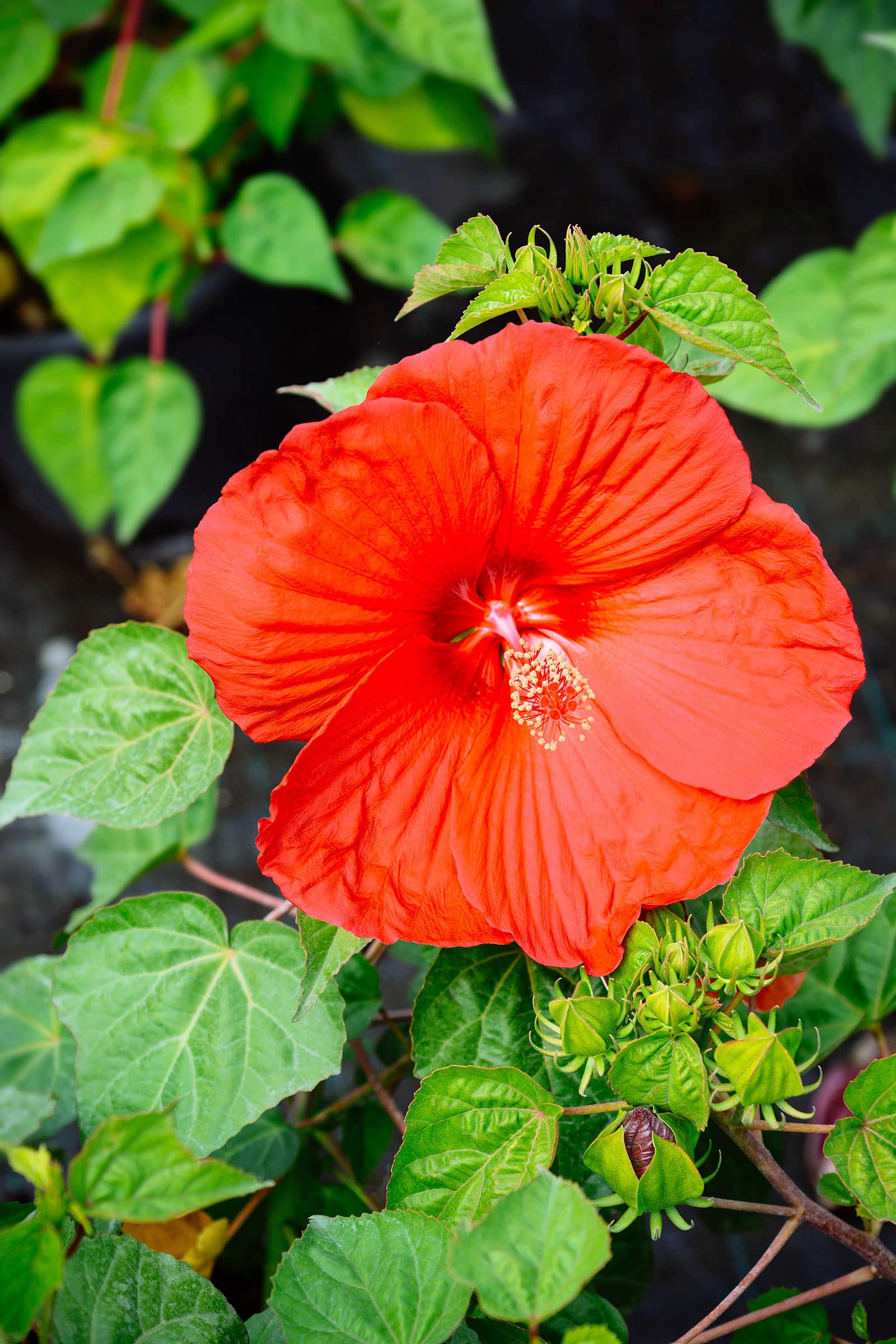
Just how hardy is “hardy”?
Pretty hardy, actually! It depends on the specific variety, but most types of hardy Hibiscus will do fine between USDA zones 5 through 9. With some extra protection and in a sheltered location, you’ll likely even be able to stretch it to zone 4.
Compare that to tropical Hibiscus, which will only thrive between USDA zones 10 to 12!
Did you know?
If you don’t mind smaller flowers (3 inches), there’s another Hibiscus out there that handles the cold pretty well. It’s called Hibiscus syriacus or the Rose of Sharon, and it tends to do well in USDA zones 5 through 9.
Disclosure: If you shop from my article or make a purchase through one of my links, I may receive commissions on some of the products I recommend.
Hardy Hibiscus varieties
Hardy Hibiscus plants are usually hybrids. And as with many other ornamental plants, nurseries are always working on new varieties (called cultivars) that are even prettier, even hardier, or have some other kind of special characteristic. As a result, there are now hundreds of types of hardy Hibiscus to choose from!
The most common hardy Hibiscus hybrids found in nurseries are the Moonshadow series by GardenChoice, Summerific by Walters Gardens, and Luna by PanAmerican Seed (all of which are available as bare roots from Nature Hills).
Other popular hardy Hibiscus varieties include (but are definitely not limited to):
- Hibiscus ‘Midnight Marvel’: Deep, dark red flowers and greenish-red foliage
- Hibiscus ‘Lord Baltimore’: Very large, bright red flowers
- Hibiscus ‘Lady Baltimore’: Bright pink blooms with a dark pink center
- Hibiscus ‘Plum Crazy’: Dark pink to purplish flowers
- Hibiscus ‘Summer Storm’: Pale pink flowers with dark pink centers and striping
- Hibiscus ‘Robert Fleming’: Very hardy plants with burgundy blooms
Where to buy
Hardy Hibiscus plants
Growing hardy Hibiscus
When you purchase a hardy Hibiscus, you’ll usually get a potted plant (available in spring and summer) or a bare root plant (available in early spring).
My own hardy Hibiscus were grown from bare roots that look like this:
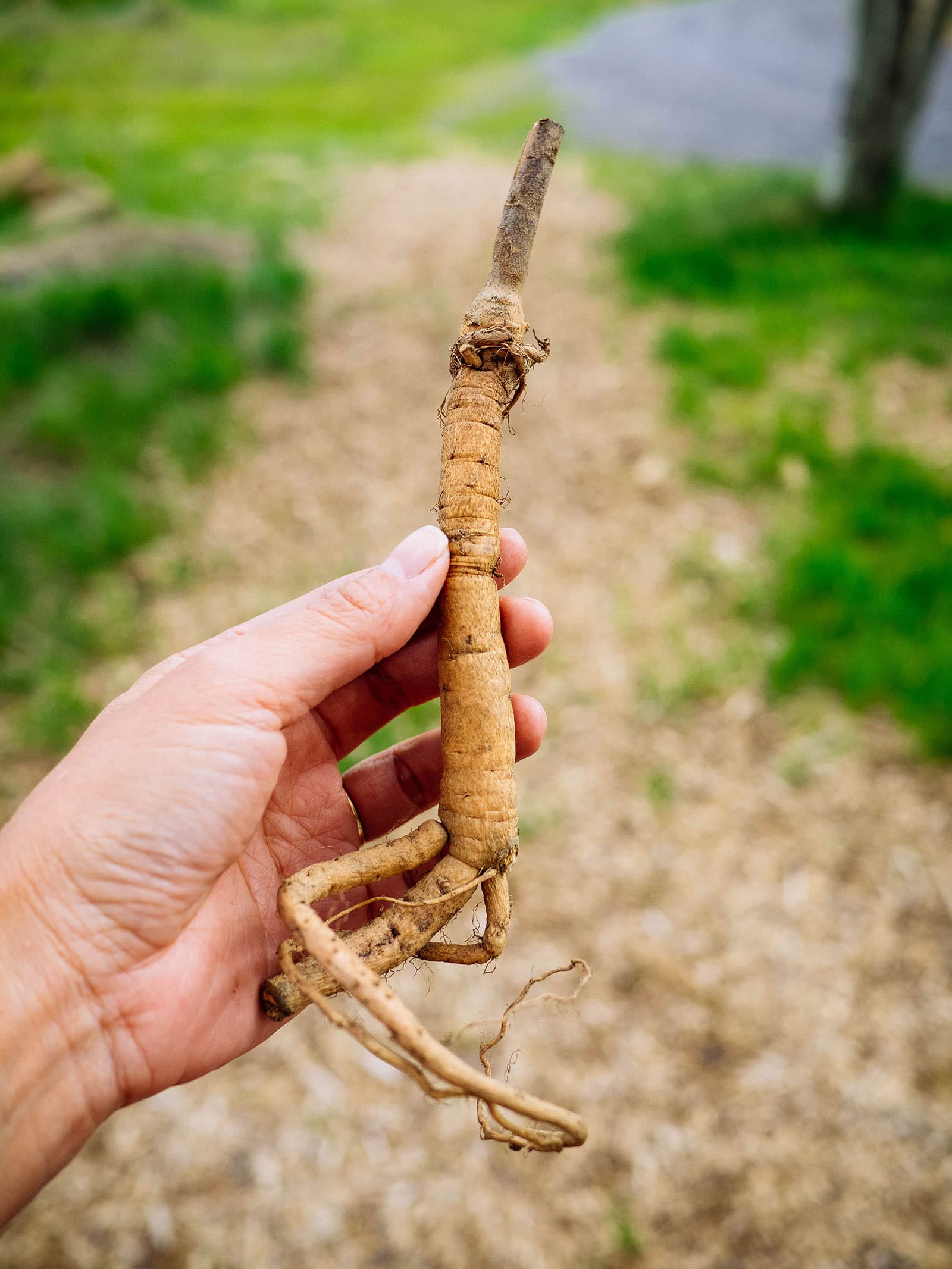
Don’t be alarmed when yours arrives in the mail, as it’ll look like a dead stick but eventually grow into a large, healthy shrub! (If it’s still too cold to plant your hardy Hibiscus outside, here’s an easy step-by-step guide to growing your bare-root perennial in a pot.)
Light
When planting your brand new hardy Hibiscus, consider that these are big sun lovers. Yours will do okay in partial shade, but never more than that—it won’t thrive, and it certainly won’t bloom as abundantly.
Unless you live in an area that gets very harsh sun (in which case a spot where your Hibiscus will be protected from the strongest afternoon rays might be a good idea), it’s best to give it a nice and bright location.
Soil
As you’ll learn throughout this guide, hardy Hibiscus likes a lot of everything. A lot of light, plenty of water, and indeed, a good amount of nutrients in its soil too. This is not a plant you should try to grow in poor soil types—it likes a rich medium with lots of organic material.
If you know the soil in your garden isn’t rich in nutrients, you should ideally amend it with organic material like compost, manure, leaf mold, worm castings, or similar.
Hardy Hibiscus plants like neutral to slightly acidic soil. If a pH test reveals your soil is alkaline (7.5 or higher), you can consider lowering it using elemental sulfur for the best results.
Watering
When considering the water needs of your hardy Hibiscus plant, remember that one of the main “ingredients” in most of these hybrids is Hibiscus moscheutos. This species is also known as the swamp rose mallow. Swamp as in wet and marshy. Catch my drift? Unlike tropical Hibiscus, hardy Hibiscus doesn’t tolerate drought.
If possible, find your plant a spot in your garden where the soil doesn’t tend to dry out too much. If you have a pond or other type of water feature, it might like to be planted nearby. In cases where that’s not an option, you’ll need to water regularly—possibly even daily in summer.
If you grow your hardy Hibiscus in a pot, keep a close eye on it, as the soil in a container can dry out alarmingly quickly on hot days. Do be sure to always go for a receptacle with a drainage hole, because as much as these plants like moisture, their roots will still rot when left in standing water for too long.
Fertilizing
Your hardy Hibiscus has to work very hard every spring to grow from a few roots into a full-sized bush. And although water and plenty of sun are the main ingredients required for this impressive feat, nutrients are also needed. Don’t starve your plant!
The rich soil you planted your shrub in will help. You can meet your Hibiscus’ additional nutritional needs in a few different ways:
- Apply a 1-inch layer of compost around the base in spring
- Use a diluted liquid fertilizer every week or two during the growing season
- Use a slow-release granular fertilizer three times a year: when spring kicks off, around midsummer, and in early fall
Depending on what you’ve got access to, you can also use manure tea, fish emulsion, or organic mulches.
Recommended fertilizers for hardy Hibiscus:
- Jobe’s Organics Annuals & Perennials Plant Food
- Dr. Earth Bud & Bloom Booster
- Neptune’s Harvest Fish Fertilizer
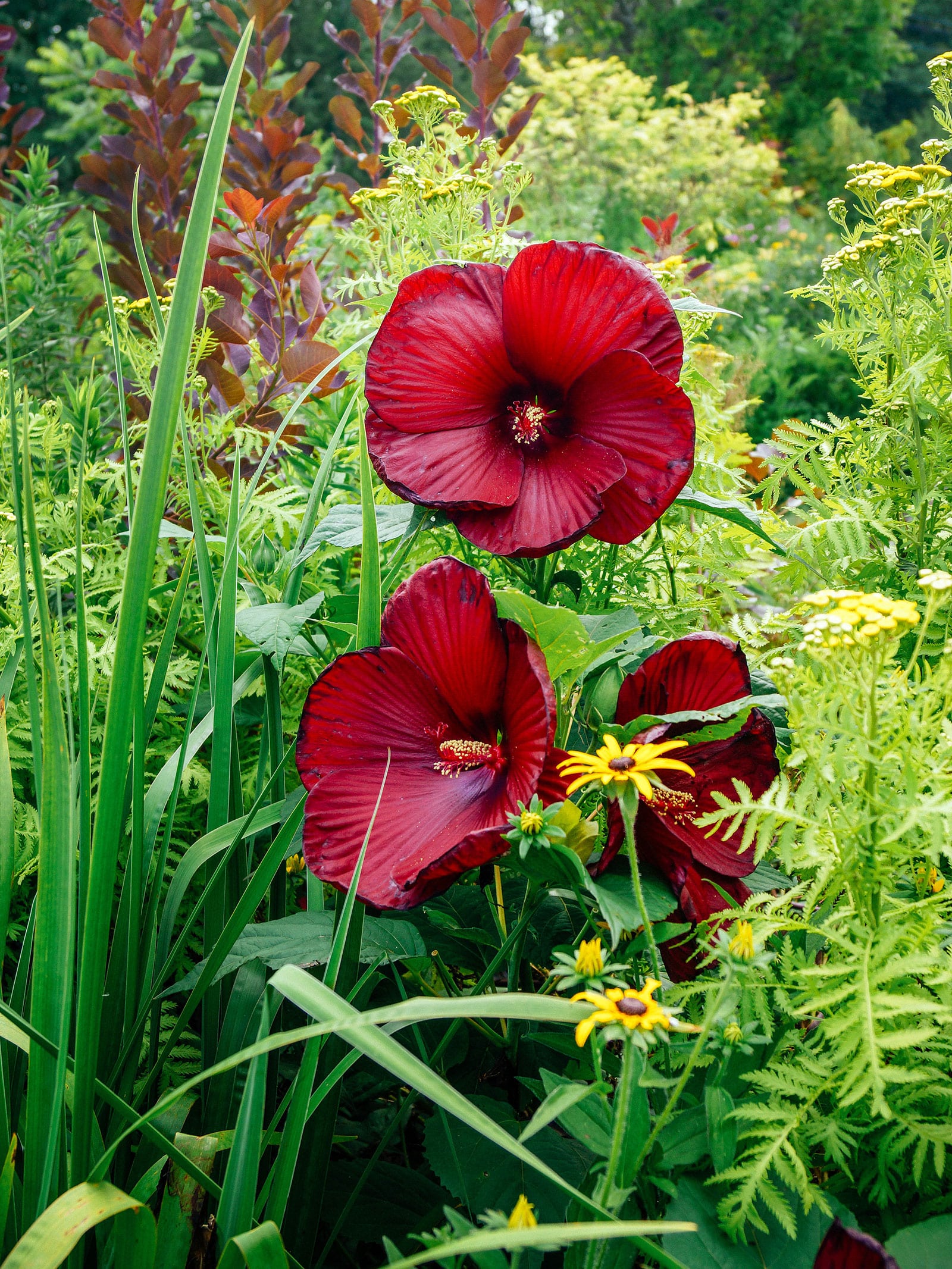
Winter care
Hardy Hibiscus doesn’t require a lot of maintenance. Once it dies back to the ground, it stores energy in the roots and crown and remains dormant until temperatures warm up again.
After the first frost, I recommend cutting back the stem to around 5 inches above the ground. Remove the pruned material just to prevent any diseases or other issues from carrying over. Don’t forget to stop using fertilizer until next spring at this point!
After cutting it back, especially if you’re right on the edge of what a hardy Hibiscus can handle in terms of climate (zone 4), it’s a good idea to apply a thick layer of mulch around the base. For extra protection, you can also wrap it in burlap.
Read more: How to protect your trees and shrubs in winter
For container plants, move them indoors to a cool spot if you think it’ll get too cold. It’s probably best not to risk keeping it outside in zone 4 with potted Hibiscus, as containers succumb to freezes more easily than those grown in the ground.
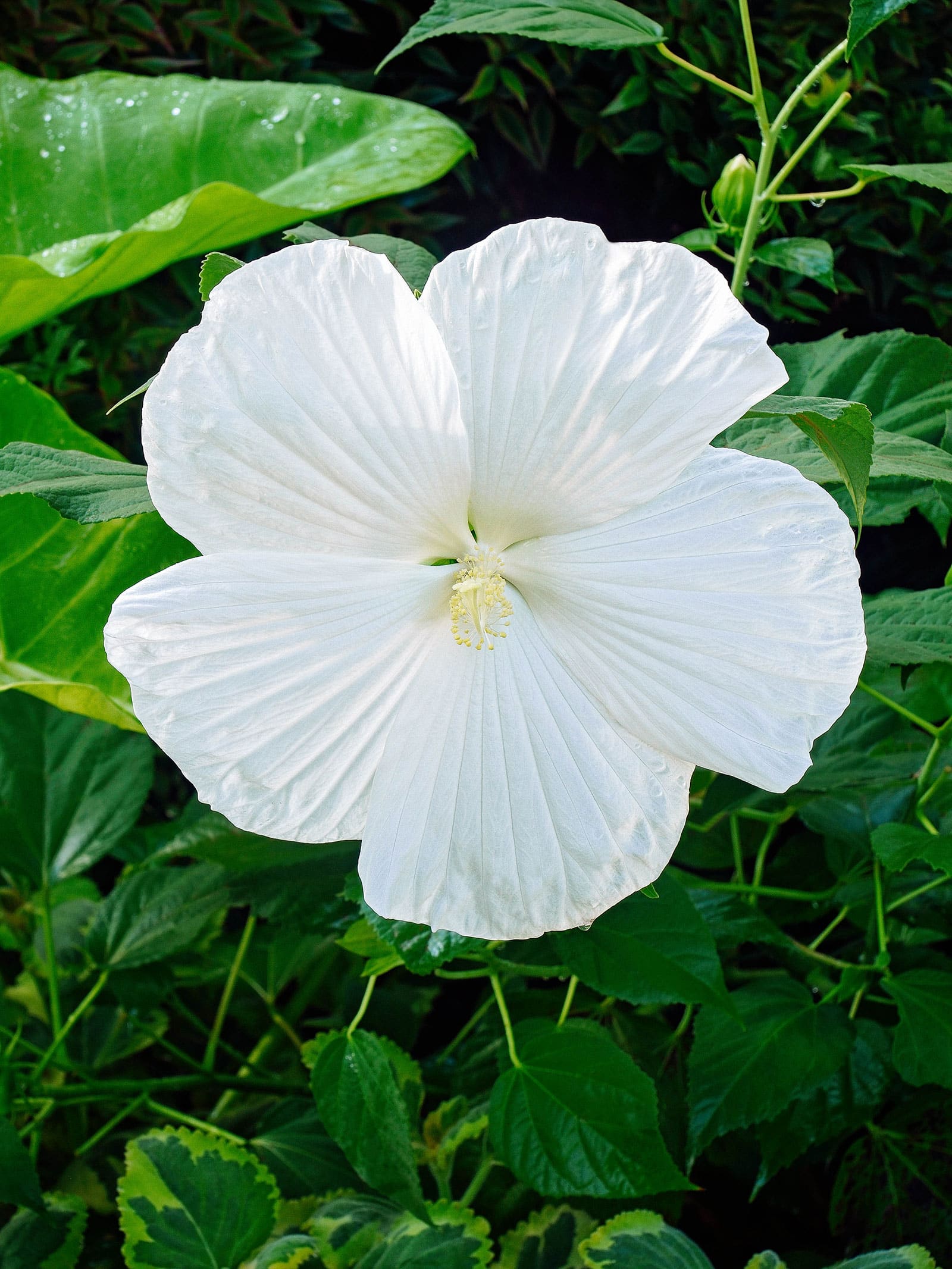
How do you propagate hardy Hibiscus?
Because hardy Hibiscus is an herbaceous plant, its stems are pretty soft. This makes it a great candidate for propagation! You can take normal stem tip cuttings (at least 3 inches long with a few leaves) and root these in water before potting them.
You can also propagate directly in a planter with some soil. For the best results, dip the cutting in rooting powder before sticking it in the soil. Place the whole thing in a clear plastic bag during the first few weeks to keep moisture in.


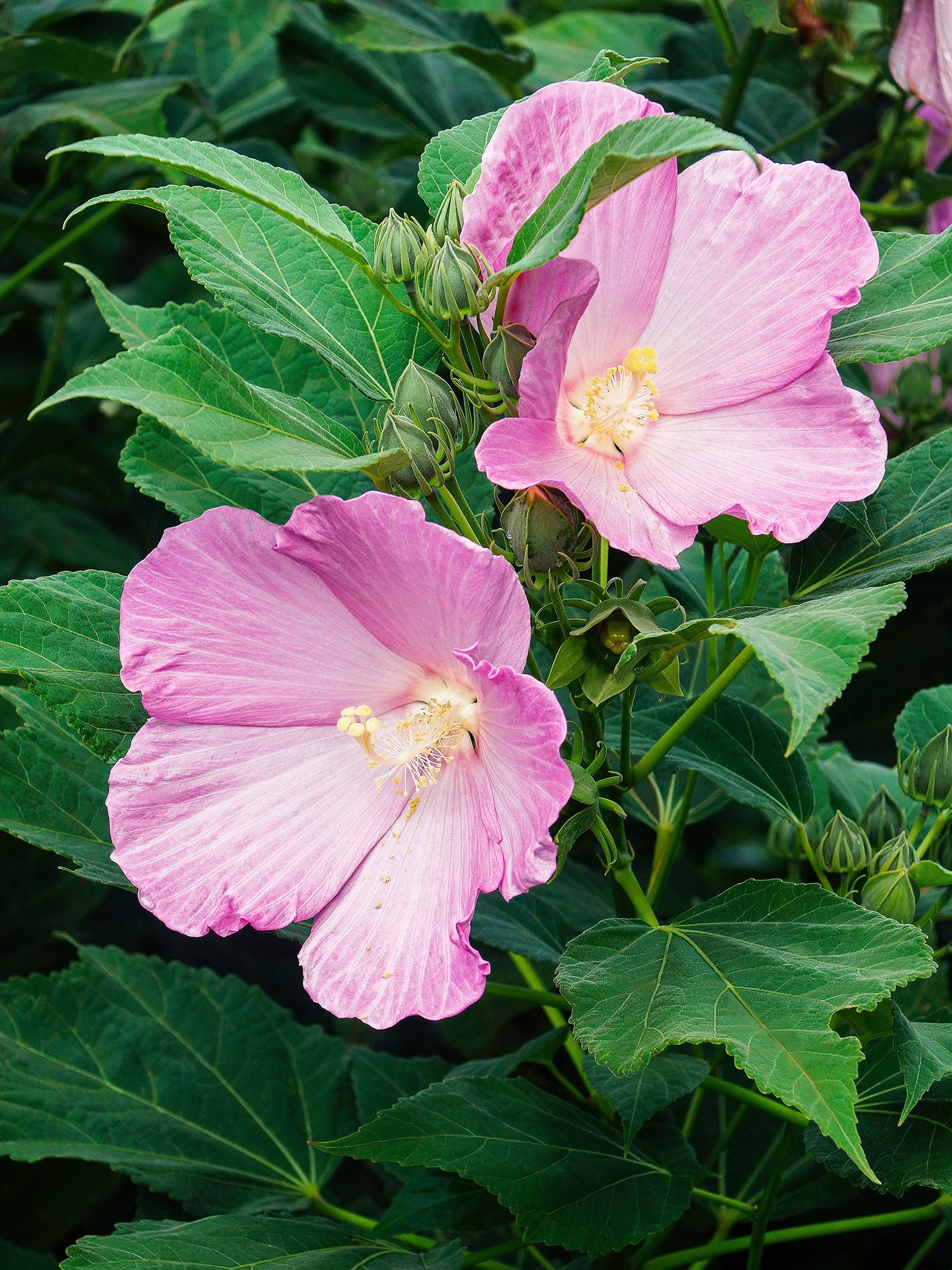
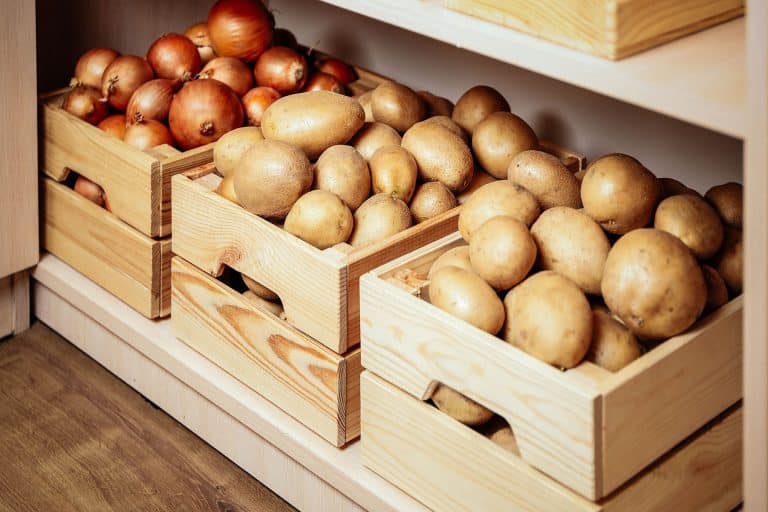
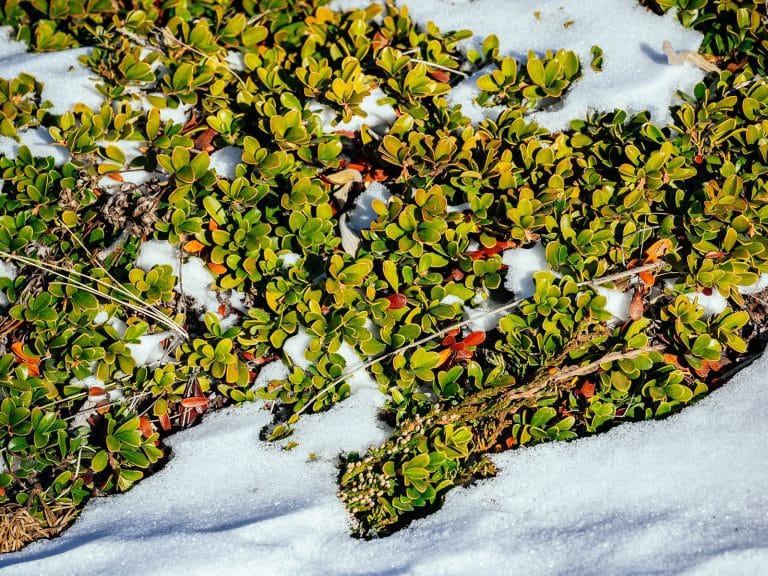
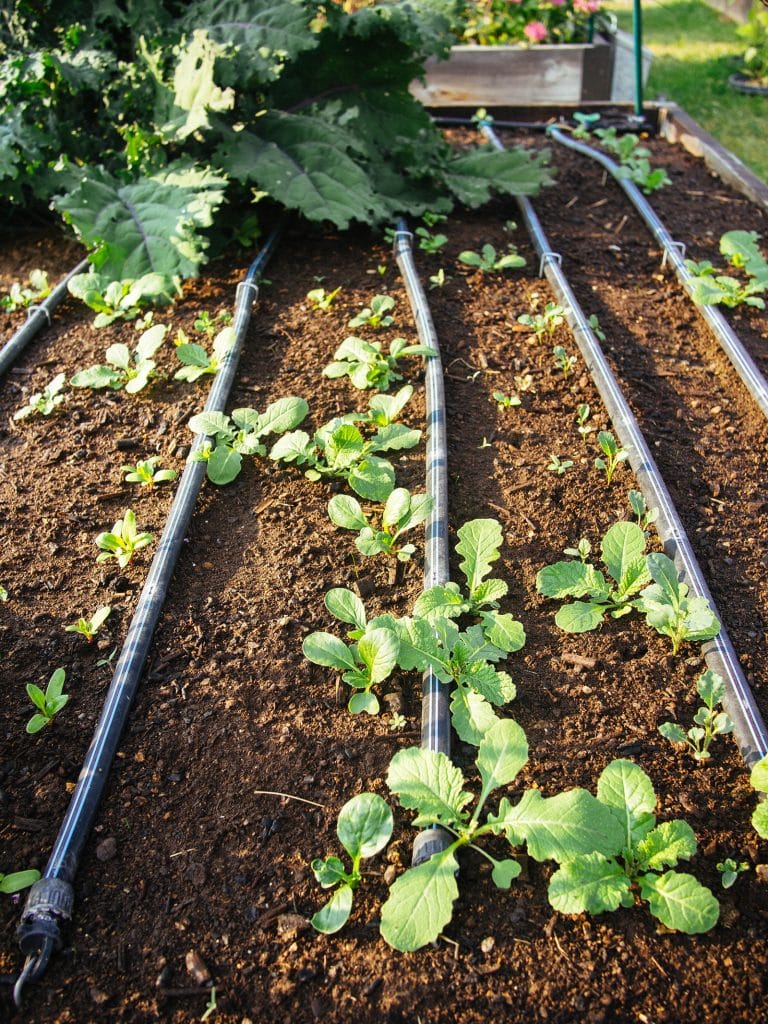
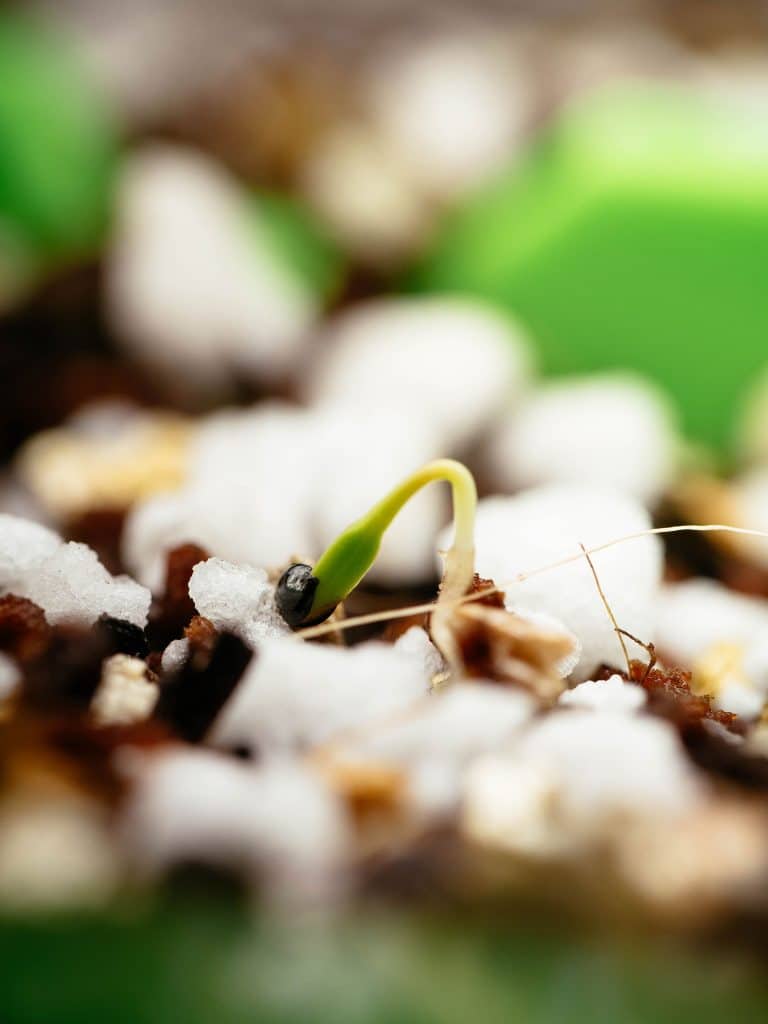









My buds on my hibiscus are not opening. They are falling off